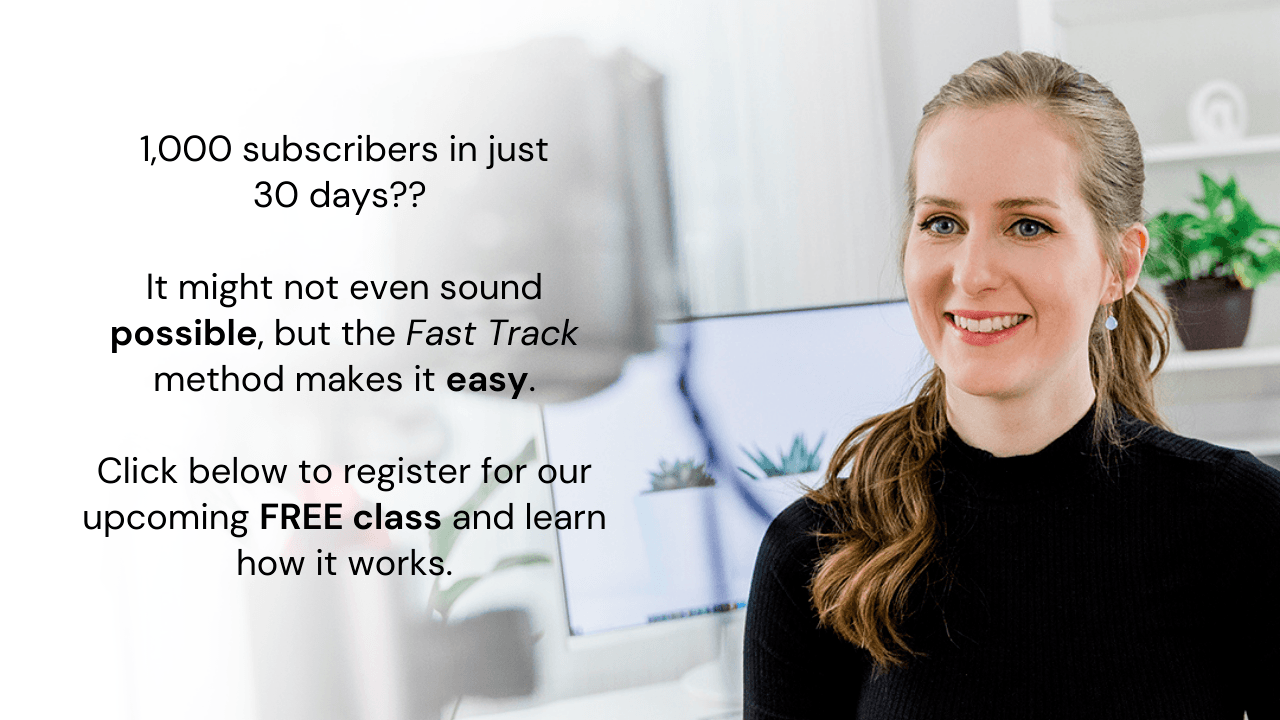YOUTUBE SEO BASICS – Rank Your Videos #1 on YouTube (Fast!)
You want to grow fast on YouTube, but you’re having a hard time ranking in the search. Well, getting clear on YouTube’s SEO basics can take you far and fast with your channel.
I’ve used these exact SEO strategies that I’ll share with you today to rank in the top 3 for search on YouTube with competitive keywords like “how to self-publish a book,” “how to write a business plan,” and “how to start your own business.”
If you’re making videos consistently on YouTube and not getting enough views to grow your channel, you could be making some key SEO mistakes.
In this article, we will go through the three factors the YouTube algorithm actually cares about, how I implemented these for growth, and how you can implement changes today that could make a major difference for your channel’s growth as well.
What is SEO?
SEO stands for Search Engine Optimization and, in essence, it is how you can work with the platform’s algorithm to get your videos to rank well by showing up in top search results.
Here’s the thing…
YouTube is a business, and businesses need to make money to stay in business. That’s a fact. The company is willing to invest to become more profitable, and by investing in improving the algorithm process, the company is able to keep viewers on the platform for longer periods of time. The longer viewers watch on YouTube, the more money the company makes. To fulfill this purpose, their #1 goal is to match viewers with the exact videos that they want to watch.
This CAN be good news for you, though!
If you learn to work with the algorithm so it knows exactly what your videos are about and exactly who would want to watch them, then, in turn, your videos will be suggested to the right people, and your channel will grow. It’s a win/win for everyone – your viewers find the content they were looking for more easily, your channel continues to see growth, and YouTube makes more money!
#1 – Focus on average click through ratio (CTR)
So… what factor actually matters most to YouTube?
Is it how many likes or comments you receive, a pretty thumbnail, how your voice sounds in your video? Is it a long description, thorough research and planning, or watch time?
The most important factor YouTube is looking at is whether or not someone clicks on the video YouTube suggests to them. It’s as simple as that, and this is called the click through ratio or CTR.
What affects your video’s CTR?
Many factors come into play as viewers decide if they’ll click on your video to watch it.
For example, is your thumbnail attractive to the viewer? Does it match the title of your video? Are the keywords you’re using a good fit for the topic you’re trying to rank for?
Also, if viewers have watched any of your videos in the past, this will greatly affect whether or not they click on your future videos. Every video matters when it comes to content and optimizing it for SEO.
How to improve CTR
You have a huge opportunity when the algorithm picks up one of your videos and suggests it to others, and you want to ensure that the video is optimized in a way that it will get noticed by the right people so they will click to watch.
Here are two main tips I have for you on how you can improve your click through ratio when your video is suggested to a viewer by the algorithm:
Add a bracket or parenthesis to the end of your title – studies show that just adding a parenthesis with a few more words gives viewers more insight into what the video is actually about and builds their confidence that the video is what they have been looking for.
Add target keywords in the first 20-25 words of your video’s description – these words are the only part of the description that someone sees before clicking on your video, and these 20-25 words affect if viewers choose to click on the video. In those 20-25 words, is the viewer confident that you’re giving them what they want?
Choosing relevant keywords
Keywords are, essentially, words or phrases people may type into the search bar to find specific content they are looking for.
Examples: “how to start a YouTube channel, “rank on YouTube,” or “how to create a sales funnel.”
Keywords are the heart of any search algorithm, whether it’s Google or YouTube or another search engine. Viewers use keywords to tell the algorithm what they are searching for, and the algorithm then finds relevant content to put in front of them.
3 things you need to do in regard to keywords:
Know what keywords you want to rank for.
Choose good, relevant keywords for your video.
Optimize your videos to rank for the keywords you’ve chosen.
Use common sense
When deciding on keywords, first ask yourself what your video is about and how you can explain your video in just a few words. Once you’ve decided on these few explainer words, you can use them to search YouTube and see what videos show up.
Of the videos that appear in your search, are any similar to the one you want to create? If so, this means the algorithm could ping your keywords currently. However, if the videos that show up are off topic to what you envision for your video, you will want to play around with the keywords you use. It’s important that the algorithm agrees the keyword you use matches your video’s content so it is suggested to the right viewers and not with irrelevant content.
Choose popular keywords
From your YouTube search above, check and see how many views the other videos are getting.
You want to make sure that your keywords are popular enough so that, if your video ranks, you’ll get plenty of views.
Utilize TubeBuddy
TubeBuddy is a free extension for YouTube where you can see how popular and competitive different keywords are. This helps you to see how many other videos are trying to rank for the same keyword.
The good news, though, is that you can rank for any keyword no matter how competitive it is IF it is correctly optimized for the specific keyword AND the video is a good fit for that keyword.
Take my keyword for this article as an example. My main keyword is “YT SEO basics,” and even though this is a very competitive keyword, my article can rank high if I optimize the post well. Then, if it does rank high, I know it will get a ton of traffic because it’s such a popular search term.
Look for keywords with a few thousand searches (or search volume) every month. This is a good starting point.
Choose keywords before filming
It’s important to choose your keywords before even planning your video.
Ensure that your keywords are popular enough, and then design your video around that specific keyword to give viewers exactly what they are looking for. It’s harder to go back and try to fit your keywords into your video, especially if you find that it’s not the right fit for the video or just not popular enough.
RELATED: Why You’re Not Growing on YouTube
#2 – include keywords in your video content itself
In order to rank your videos, you want to include your keywords in your thumbnail, title, description, and tags for sure. However, what matters even more is that you include your keywords into your video itself.
YouTube listens to every single video you upload through auto captioning to understand exactly what your video is about. The actual words you use in your videos are how the algorithm determines what they’re about and who would like to watch them.
Alongside actually saying keywords in your video itself, also make sure your description is at least 100 words long. The longer the description, the more you can tell YouTube what your video is about (also, use each main keyword in your description at least two times).
What about Tags?
A keyword is a term people use to search for content. Tags, on the other hand, are specific keywords you plug into your video’s metadata.
Keywords are super important, but tags are no longer relevant. In the past, the algorithm used titles and tags to determine what your videos were about, but over time, as the algorithm improves, it now factors in descriptions and listens to the video itself to better understand your content. It no longer utilizes tags.
You may be asking, “If tags don’t affect my video’s ranking at all, then why bother using them?”
If you’re using a commonly misspelled word in your video, a tag can be useful for clarification. The other reason tags are still useful is to target keywords.
Now, you won’t rank with tags, but you can get valuable insight on TubeBuddy with your tags.
While using the free extension, you can see data on how your video is ranking for each of the keywords you added as tags and continue to optimize your channel.
#3 – have a plan for audience retention
Audience retention is the percentage of time that viewers choose to watch a specific video as well as the percentage of time viewers on average engage with your videos channel-wide.
Similarly, average view duration is the number of minutes on average that viewers watch your videos.
Retention matters because YouTube will rank your videos based on these percentages because, the longer a viewer watches your video, the more data that gives to YouTube signifying the content is what people are looking for and it’s keeping their attention.
3 tips to improve your audience retention:
Make sure your video is a good fit for the search intent – this comes with planning and filming your video with your keywords in mind.
Don’t waste your viewer’s time – get to the point and keep your video moving. Try not to add filler words and avoid rambling on too long about one thing.
Make sure to keep your viewers focused by using an easy-to-follow outline – to keep viewers’ interest, you need to help them understand where the video is going. You can also change things up by using different camera angles, adding graphics and broll, or adding some background music. Your goal is to make it as interesting as possible.
RELATED: What I Did to Level Up My Videos
How to gain social proof for your videos
When others see that people have liked or commented on your videos, they are more apt to watch them too. The social proof helps them to determine if others have watched and liked your video, then they may as well.
Ways to increase social proof:
Get people to comment more by asking a specific and easy-to-answer question. Consider making it a two-choice answer so they are willing to share their opinion. Here’s an example: “How do you choose your keywords or video topics? Do you make videos on what you feel like making, or are you analytical and do a ton of research to choose keywords based on that data you find? Are you more of the intuitive type or the research type? Tell me in the comments below!”
Engage with your video yourself. Once you publish your video, make sure to click on the video and watch it all the way through (a few times!). This will set your audience retention on a good path from the start. Make sure to give your own video a like and pin your own comment with an engaging question.
Bonus: engage with your video on any additional Google accounts you have! Watch your video all the way through and give it a like and comment from each account you can (your second google account, your partner’s, your kids’, even your dog’s!). This may feel silly, but every single view counts when you’re just starting out with your channel and trying to get noticed by the algorithm.
3 Secrets to Reach 1,000 Subscribers and Get Monetized in Just 3 Months
Do you want to learn more about how to reach 1,000 subscribers and get monetized?
Join me in my free YouTube training where I walk you through the most important factor for racking up watch hours as quickly as possible and how to maximize every view that finds your channel.





